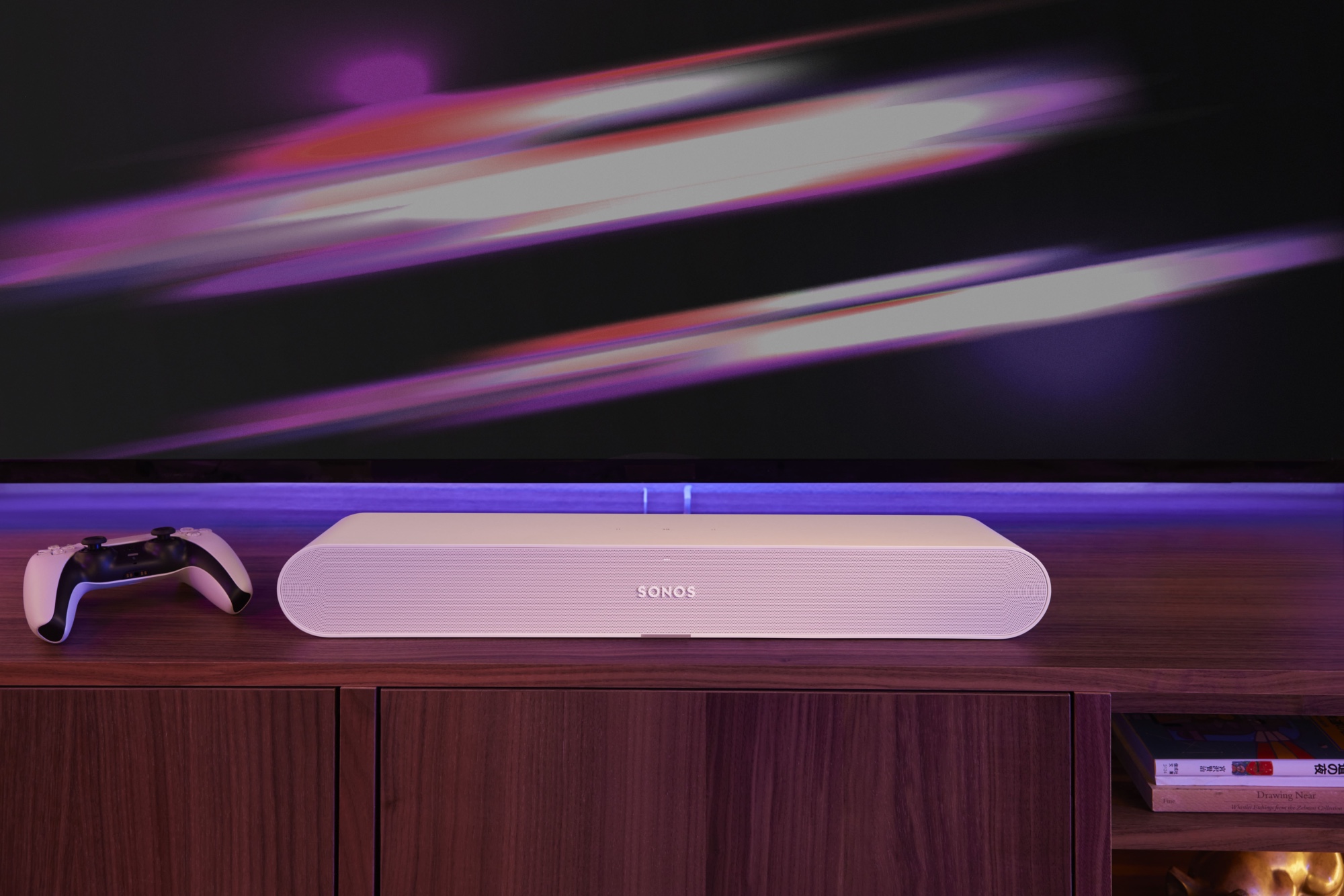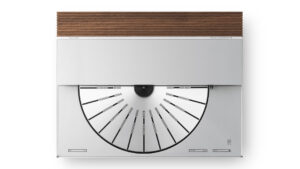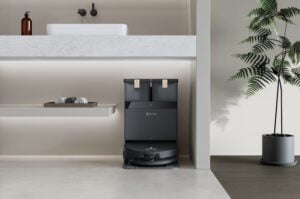Although rumours of a new Sonos soundbar have been circulating online for the past week or two, it wasn’t until today that the high-end audio company confirmed every detail surrounding its latest kit. The most impressive feature? Price. The Sonos Ray is now the most affordable premium soundbar on the market at an Australian RRP of $400, sitting beneath the now mid-range Sonos Beam and the high-end Sonos Arc, which clock in at $700 and $1,400, respectively.
Having a budget Sonos soundbar as part of such a premium lineup will be very valuable for anyone looking to build a home cinema without shouldering the extra costs required to buy all the ancillary speakers like the Sonos Sub and those quintessential Sonos One speakers. It’s no stretch to say this new budget soundbar will be a swift success on the market when it starts shipping in Australia on Wednesday 8th June.
Sonos Ray – Australian Pricing, Release Date & Specs
Sonos is clearly putting a lot of stock in this announcement, which makes sense considering only around 10% of TV owners actually use a soundbar. That leaves a lot of consumers hesitant about entering the market, and the Sonos Ray should go far in encouraging people to take a leap without exposing them to the risk of wasting their money on something par.
Considering the Sonos Ray is just over half the price of a Sonos Beam (Gen 2), there’s now a compelling reason to enter into the Sonos ecosystem which is widely celebrated by audiophiles and musicians based on audio quality, aesthetic and ease of use.
The Sonos Ray is slightly different from the Arc and Beam (Gen 2) and Sonos needed to make very specific adjustments in order to achieve the compact format. For starters, the speaker grille is entirely on the front, compared to the more expensive soundbars where the fabric grille wraps around towards the rear.
All acoustic elements under the sleek exterior are forward-facing, which is unlike most premium soundbars that feature some side-firing drivers and/or upward-facing drivers to try and recreate the spatial sound compatible with Dolby Atmos.
The ray has two very unique tweeters which both feed into their own custom split wave guards, essentially helping push sound around the room to help build that Dolby Digital sound without featuring the typical architecture to do so.
This clever way of getting wall-to-wall sound should ideally be complemented by two flanking Sonos One speakers and a Sonos Sub, but even without the full set-up, the Sonos Ray does a great job at elevating the cinematic experience far beyond those tinny, clarity-lacking internal speakers that have been plaguing TV manufacturers for years.
How do I know? I was given a briefing on the Sonos Ray yesterday. While BH will be publishing a full review of the device closer to the release date, I left the room really surprised at just how large and spatial the sound was from such a small device.
Let’s run through the specs for a second so you have a nice little round-up. The Sonos Ray features:
- Two tweeters, each with a split wave guard
- Two full-range midwoofers
- Four Class-D digital amplifiers
- Bass reflex system software to give more detail to low-end frequencies
- Up to Dolby Digital 5.1
- Adjustable EQ via the Sonos app
- Sonos TruePlay set-up (which allows the speaker to calibrate as a function of its surrounds)
- Sonos Night Sound (which keeps the volume consistent between loud and soft events)
- Speech Enhancement (proprietary software to bring dialogue forward in the mix)
- Connection via an optical output
- Compatibility with any TV remote
- White or black colourways
My limited experience with the Sonos Ray was impressive, to say the least. The smaller format certainly works for anyone looking to store their soundbar away in a TV cabinet or in a smaller enclosure rather than wall-fixed above the TV – the best orientation with a Sonos Arc. The flat grille and forward-facing acoustics mean there’s no interference from nearby surfaces, so there’s no issue with placing this just about anywhere around your TV.
Of course, there are compromises. You won’t be able to milk anything close to Dolby Atmos from the Sonos Ray much like the immense spatial performance you’d get from the Sonos Arc. You also don’t have access to any voice assistant, given there are no mics. That means you won’t get access to the Sonos Voice Assistant, which was also announced today and is launching later this year in beta for the US market.
The voice assistant issue can easily be solved by adding a Sonos One to the mix anyway.
I guess the biggest benefit is the reason why most people get a soundbar in the first place. Dialogue. The Sonos Ray is absolutely incredible at helping elevate dialogue with clarity without sounding too high-pitched and tinny. During the briefing, I was able to watch a bunch of different clips from shows like Suits and movies like Ford Vs Ferrari. If I was to rely solely on some TV speakers, I might have a hard time understanding everything that was said and would mostly need to turn subtitles on. That issue doesn’t exist with a soundbar, and the Sonos Ray is a nice, cost-effective way to address that issue.
While the specially designed low-velocity port design on the Sonos Ray minimises distortion and helps give some body to the lower end, I did find there was a bit of muddiness on songs where the bass was harder to pick apart. Something like ‘Mr. Me Too’ by Clipse wouldn’t be expressed as well because the production has so many different basslines layered on at once.
As mentioned above, I’ll be publishing a full Sonos Ray review once I go properly hands-on with the kit ahead of its release date.
Australian pricing: $400
Australian release date: Wednesday 8th June
RELATED: The Best Soundbars You Can Buy In Australia
Sonos Voice Assistant
As mentioned above, the Sonos Ray is the headline in a bunch of Sonos-related announcements circulating online today, one which makes good on rumours that the hi-fi experts are launching their very own voice assistant – Sonos Voice Control – and another that brings a bit of colour to the Sonos Roam with three new hues for the portable hybrid WiFi and Bluetooth speaker.
The former, Sonos Voice Control is also a fascinating prospect for the company, which a few years ago launched its own streaming radio station. Clearly, Sonos is steadily building its own tinned ecosystem, and having its own voice assistant that moves away from Alexa and Google Assistant should theoretically improve some of the pain points people have with these attentive robots.
You’ve of course got the privacy concerns, which shouldn’t be an issue here seeing as Sonos is using machine learning to ensure voice commands are processed and addressed entirely on the speaker without the need the send data back and forth between another server. This should theoretically make any interaction with the voice assistant not only faster but clearer and more intelligible when compared with the standards like Alexa and Google Assistant.
And this is a voice assistant you’ll want to be using. Instead of using some generic robot to help you out Sonos have brought on Giancarlo Esposito to be the voice behind their signature assistant. That’d be Gus Fring from Breaking Bad, so obviously plenty of customers will have plenty of meth and fried chicken jokes to throw at their speakers when the Sonos Voice Assistant launches later this year.
















